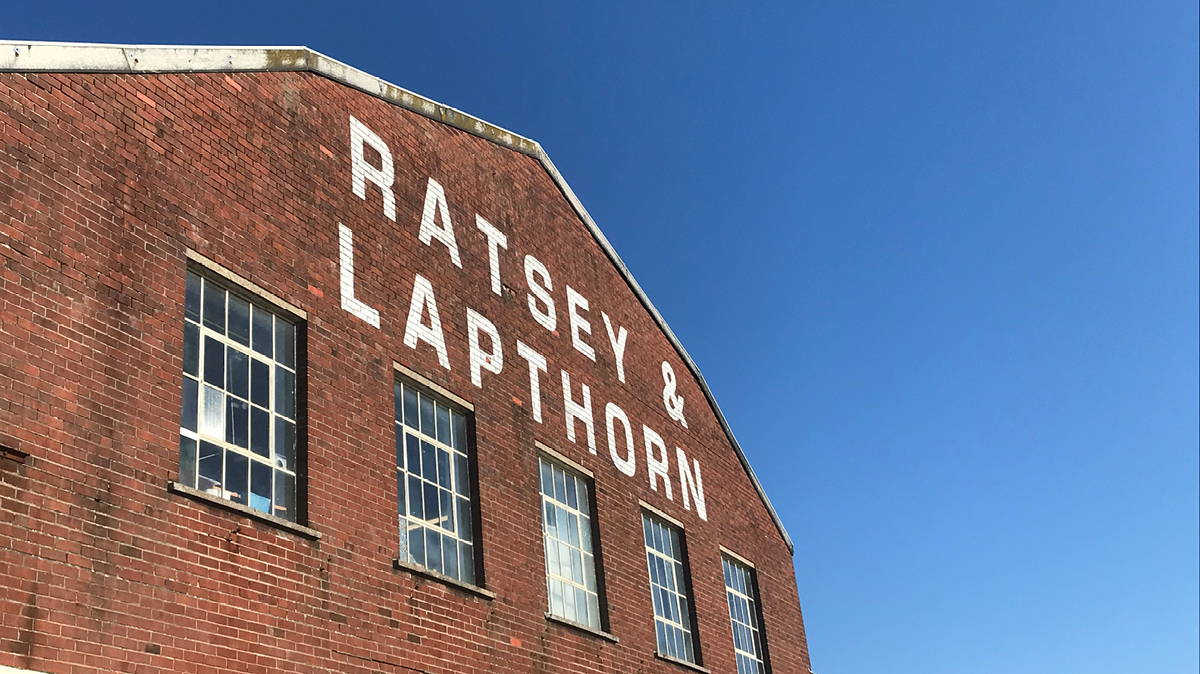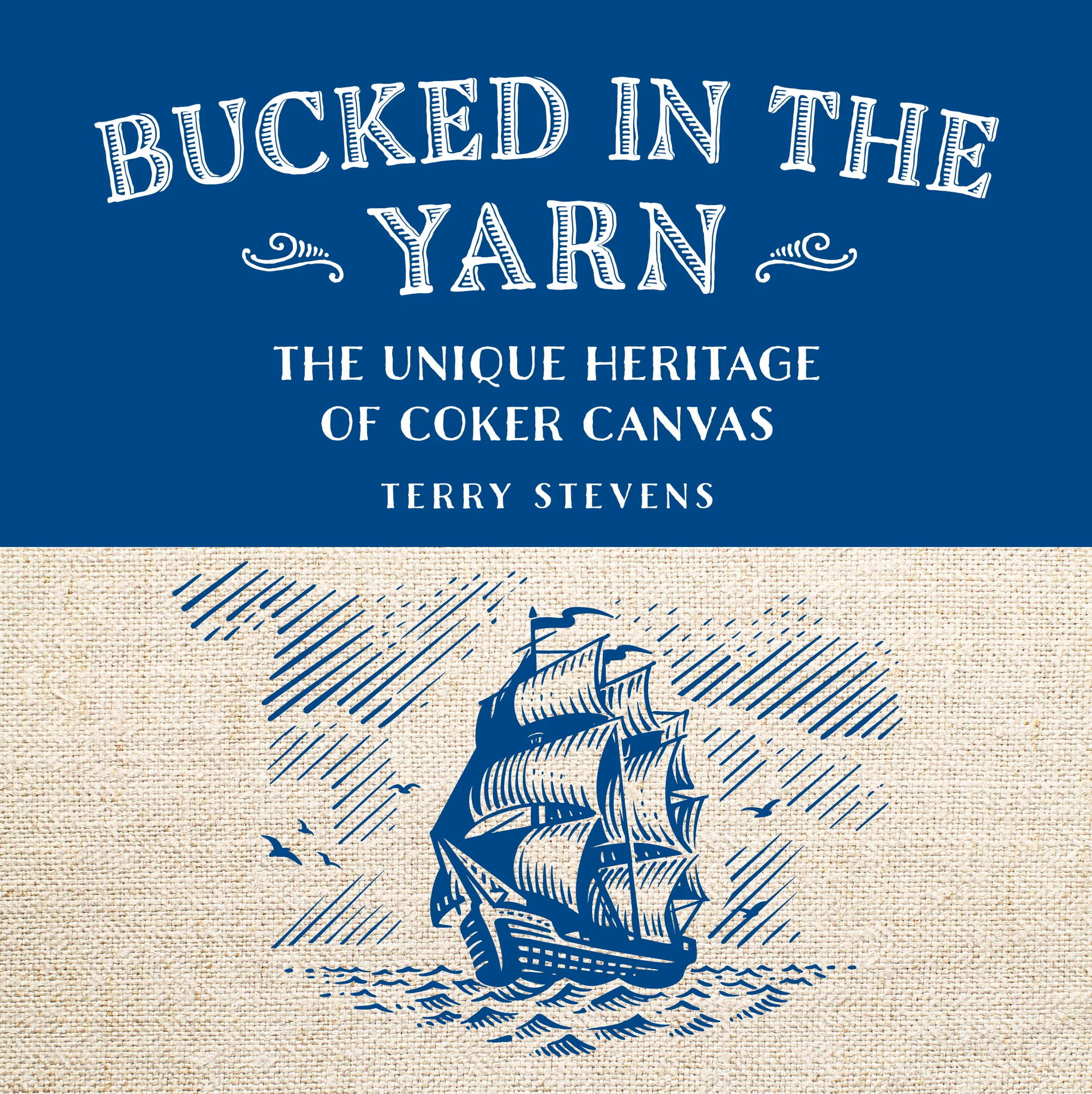
Professor Terry Stevens
Professor Terry Stevens is a multi-award winning, international, tourism consultant. He has now worked on a wide range of tourism projects in more than 50 countries around the world. In 2019 he received LUXLife accolade as the best tourism destination expert in the world.
We were lucky enough to ask Terry some questions about his new book, Bucked in the Yarn, publishing next month on the 17th September. Thank you, Terry, for answering our questions. We hope you enjoy reading.
What sparked your inspiration for researching and writing this impressive heritage book on the pioneering Coker Canvas?
There were three triggers for writing the book.
On becoming a Trustee of the Coker Rope & Sail Trust contributing to the restoration and conservation of the Dawes Twineworks in West Coker – today the only working Victorian twine factory in the UK – I became acutely aware of how this structure was simply part of a much bigger jigsaw of a unique heritage that was at the heart of the DNA of East, West and North Coker.
The second factor came, I suppose, from the fact that as you get older you become more quizzical of your past – both personal and of where you journey in life began. This feeling of beginning and ending, of continuity, of being still and still moving is central to the poem East Coker , one of TS Eliot’s Four Quartets. Despite living away from Coker for over 50 years I am increasingly drawn back to the place that gave me my identity. In my beginning is my end, as Eliot wrote and as my father (the then village carpenter was by default the village undertaker) was charged with interring Eliot’s ashes in the village church in 1965, I thought it time to get to know my original square mile in more detail.
Finally, I was motivated through anger when during COVID I was reading The Annals of West Coker written in 1930 by the eminent historian and former civil servant Lt. Col. Sir Matthew Nathan, in which he made the astonishing statement that, ‘Nothing much ever happened in this part of England where the Coker villages lie. No great man was ever born or died here. No battle was fought near it nor did any constitutional crisis have its rise in the neighbourhood. It was never the centre of great industry nor the source of wide-spreading trade. No relic of saint nor monument of art nor scene of natural beauty ever attracted visitors to it.’ He was so wrong and misguided and I felt it important that this view was contested.
You write that the Coker Canvas became a ‘global brand’, taking the Coker sailmaking industry from a domestic business to a factory-powered world trade. What made the Coker Canvas so different to any other sailcloth?
Coker Canvas was stronger, more durable, less prone to rot and latest twice as long as any other sail cloth. As a result, it was superior and, therefore, more expensive. Cost would eventually be a cause of a downturn in fortunes as other canvas makers tried to copy the Coker Canvas pattern of weaving but failed to recognise that the true quality of the Canvas was the result of the flax and hemp fibres being ‘bucked’ (strengthened) as yarn using a special process rather than strengthening a piece of finished sailcloth – hence the phrase 'Bucked in the Yarn Not in the Piece’. The book fully explains the process and the terms used locally to describe the acts of preparing the fibres.
Considering you are from East Coker and worked in one of the original Coker sailcloth factories, how special is this book to you?
I worked in Drake’s Webbing Factory in East Coker as did my mother and one of my uncles. Uncle Walt was a ropewalker – a job he loved even rejecting an approach from Aston Villa to play professional football. The factory was one of the originally owned by Edward Taylor and was one of the main sailcloth factories in the Cokers. Our primary school overlooked the factory. My job was to clean the looms during the two-week summer closure of the works. It was horrible, dirty and at times dangerous nonetheless it still gave me a direct connection with the story of Coker Canvas.
Did anything surprise you in your research when writing this book?
Surprises came from every dimension. As the wonderful Bill Jones (Emeritus Professor of History at Cardiff University says in his generous review of the book, “Bucked in the Yarn is an absorbing human-interest story, a tale of innovation, enterprise, fallibility, intrigue, controversy and endurance, and of local pride and determination.”
I managed to weave together tales of industrial espionage, political plotting, murders, involvement with the slave trade, remarkable stories of enterprise, innovation and of global exploration. There is more than a nod to cultural giants – a poet and a buccaneer. There are constant twists and turns in the story of Coker Canvas. It wasn’t all plan sailing and in the end there was a remarkable twist of fate. I won’t spoil the read.
The biggest surprise came with researching the very deep and significant role that Coker Canvas played in the history of the America’s Cup and the centrality of the sailmakers, Ratsey & Lapthorn of Cowes who made all the sails for the British challenger yachts in the early years of the America’s Cup and their insistence on using Coker Canvas. This is hugely relevant this year as the 37th Edition of the Lousi Vuitton America’s Cup takes place in Barcelona later this year and we will be launching the book at the Ratsey & Lapthorn sail loft in Barcelona on the eve of the America’s Cup. If anyone would like an invitation to the Barcelona book launch on 29th August please contact Graffeg.
Image: Ratsey & Lapthorn © Terry Stevens
What do you hope readers will take from Bucked in the Yarn?
Firstly, the fact that there are often fine heritage stories to be discovered in your local area. There are people who have done remarkable things with locally sourced raw materials to create something amazing…so go out and find out more about your square mile.
Secondly, I hope they will find something of interest in this book irrespective of any background related to sailing or maritime history.
Finally, I would love to think that readers of this book will take the time to visit the Cokers, to attend on the Dawe’s Twineworks Open Days, to stay in the villages, to enjoy local hospitality and contribute to the economy that, in turn, will continue to assist the Coker Rope & Sail Trust to celebrate and conserve this extraordinary heritage.
Bucked in the Yarn compiles an array of contemporary, archived, and modern-day images. How important are the visuals in this book, and how will this benefit readers?
They are essential. As the mantra goes, ‘A picture paints a thousand words’ and never has this been more relevant. The archival material drawn from so many different sources gives the reader a much better understanding of the context, the processes, and the characters than anything I could write. The contemporary images, especially those by John Snelling of Studio Elite (based in East Coker) wonderful captures the essence of the villages. I am so grateful for everyone who contributed to the visualisation of the story. I am especially indebted to some long-standing friends from the area whose personal albums of photos are at the heart of the book.
Although a remarkable story, the heritage of the Coker Canvas is one scarcely told. Why was it so important to you to write this book and share the successes of the Coker villagers?
For exactly the reason you have described. This is a remarkable story on ordinary people doing extra-ordinary things that made a global impact on world trade and exploration. As one historian has stated, this industry was as important as the ship building on the Clyde. It is a story on local heroes alongside two giants of culture and geography – a poet (T S Eliot) and the explorer and buccaneer (William Dampier).
You have written a poem for the book, ‘Esse Quam Videri’, translating as ‘to be rather than to seem’ from Latin. How does this title relate to the story of the East Coker villagers and their revolutionary sailcloth, the Coker Canvas?
The decisions to attempt to author a poem was to reflect my own journey and, I guess, to explore the challenges many of us feel when we spend most of our lives away from the place where you were born. The second aspect in terms of the Latin sub-title, ‘Esse Quam Videri’, respects the fact that this was the motto of Yeovil Grammar School where we were encouraged to do things that made a difference rather than just talk about doing something and, for me, that is what the sailcloth makers, the rope walkers and those involved in the twineworks did. They made a difference.
Bucked in the Yarn by Terry Stevens tells the unlikely and incredible story of a small collection of Somersetvillages whose residents contributedto exploration, trade and travel aroundthe world and created a new globalstandard of sailcloth – the unmatchedCoker Canvas.
For over three hundred years some of the world’s most famous admirals, explorers, buccaneers, and aristocrats captained ships and luxury yachts whose sails were made from the exceptional Coker Canvas - a much sought after sailcloth that became the standard of quality for the British Navy and other countries around the world. This book explores the history of sailmaking in East Coker and how this global ‘brand’ impacted the local area.


